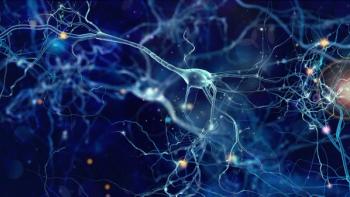
Transvaginal Hydro-Laparoscopy
OBGYN.net Conference CoverageFrom American Association of Gynecological LaparoscopistsOrlando, Florida, November 2000
Dr. Larry Demco: “Good day from Orlando, Florida from the 29th Congress of the AAGL. I’m Dr. Demco and I’d like to interview Dr. Hugo Verhoeven from Dusseldorf. The topic we’d like to talk about today is a new technique, which Dr. Verhoeven has developed, and it’s called transvaginal laparoscopy. Dr. Verhoeven, can you give us a little background as to the development from the traditional approach of laparoscopy and how you came up with the idea of the approach that you’re now using?”
Dr. Hugo Verhoeven: “Larry, thank you very much for interviewing me today. As you know, I am working in Dusseldorf in the Center for Reproductive Medicine and of course one of the diagnostics steps in those patients is the anatomical evaluation of tubal patency. By evaluating about ten years of the classical laparoscopic evaluation of the tubes, we found out that about 79% of our patients without obvious pathology showed no pathology at all at the moment of transumbilical laparoscopy, and as we all know, transumbilical laparoscopy is not that harmless as generally thought. We were a little bit concerned that 79% of our patients had to undergo that procedure so we decided to look for a technique that was easier and didn’t have that many risks like transumbilical laparoscopy. The idea came from Leuven where they said they were doing their follicular aspirations through the vagina. They are inserting a needle in through the ovary, so why not insert a very small miniscope through the vagina into the cul-de-sac to try to evaluate the tubal ovarian unit? The problem was that if you go in through the vagina you have very close contact immediately to the uterus and to the ovary so we needed to have other scopes like fiberscopes because there we have no panoramic view. So the Circon Company came on the market with an optic with a panoramic view and that was then for us a possibility to say - now we have the right tool, let’s go through the vagina and evaluate the abdominal cavity. The problem is of course that many of our older colleagues are saying - Hugo, what are you talking about, this is culdoscopy. We did culdoscopy twenty years ago, we had bowel perforations, and we had infections so that was not a good technique. It’s completely different now, we have absolutely new tools, very small endoscopes, and we are bringing in our endoscope through a trocar. This trocar is part of an insertion system that is a combination of a Veress needle, a dilatator, and a trocar so you’re entering the abdominal cavity only with a Veress needle so if you would have any puncture of the bowel the hole will be very, very small. We had this problem 4 times in over 450 cases but as this hole is so small, we had no complications of that.”
Dr. Larry Demco: “Where is the hole? Is it within the peritoneal cavity or outside the peritoneal cavity when you do actually have a bowel involvement?”
Dr. Hugo Verhoeven: “In about 90% of the cases it is a extraperitoneal perforation because you’re going from the vagina into the bowel so you have no connection between the bowel and the abdominal cavity. Since you are suturing at the end of the procedure, you are suturing your insertion hole, and you’re also avoiding fistula that could be on the way for later on.”
Dr. Larry Demco: “Is this a procedure that’s required to be done in a major operating room or can this be done in the confines of the office?”
Dr. Hugo Verhoeven: “That is a very important question because we were really looking for a technique that was easy to learn, and you don’t have to be a guru in endoscopic surgery to do this technique. It should be outpatient and if possible without any anesthesia or conscious sedation; I know that you are one of the biggest fans and an expert on laparoscopy in local anesthesia. That’s what we’re trying to find so that we only have to do some local anesthesia of the posterior wall of the vagina and nothing else. So set up we’re doing as an outpatient in our office in a O.R., of course, we need to respect the sterility rules but the patient has the surgery and 5-10 minutes later she can already leave our center and the patients love that.”
Dr. Larry Demco: “As I noticed with laparoscopy under local it was more important for the surgeon and the patient to do it where they feel most comfortable. Whether it’s in the office or in the operating room or whatever, I think this is very important and this I’m sure is equally important in your new technique. Can we only diagnose problems with your technique or is there any therapeutic procedures that can be done with your transvaginal laparoscopy?”
Dr. Hugo Verhoeven: “With transvaginal hydro-laparoscopy it’s like it was 15-20 years ago with the traditional laparoscopy, you have to start with small steps. So the first thing we did was just trying to find a possibility to check out the uterus, the tubes, the external wall of the uterus, the fimbrial ends, the ovary, and patency. That was the first thing. Of course, it was a little bit frustrating that if we saw minor adhesions or endometriosis that we couldn’t treat that but this changed so we now also have an operative trocar so we can enlarge the diagnostic trocar to an operative trocar, and through this trocar we can now insert instruments for doing coagulation, laser coagulation, scissors, and a biopsy needle. That’s what’s possible at this moment but the Leuven group has now developed new instruments for treating endometriomas so they are opening with the BICAP. That’s a bipolar coagulation system, you can open the wall of an endometrioma, evacuate the fluid in it, and then with the laser or with the BICAP you can coagulate the wall of the endometrioma. That is the idea or the hypothesis of Ivo Brosens that an endometrioma is an inclusion cyst; that means by doing a section or a resection of the complete cyst with the complete wall destroys so many oocytes and that much viable ovarian tissue that he thinks that’s the wrong technique in infertile patients. He prefers to open it, to coagulate the wall, and wait and see what happens so you can then do two or three months later without any problems a second-look laparoscopy, transvaginal, and see what happens. So I think we are at the beginning of a complete new area, that means we will be able I think in the next two or three years to do a lot of surgery transvaginally. Of course, we are not going to do a complete adhesiolysis or a hysterectomy transvaginally, that’s evident.”
Dr. Larry Demco: “This is an important aspect that you mentioned about second-look laparoscopy, be it through the vagina or through the traditional technique because Dr. Diamond from Detroit, Michigan was mentioning how frequent adhesions do occur when we operate, say, on the ovary or on the tube. I think this second-look in a less invasive way may be a very big attribute to the procedure that you’re doing. I have one further question on your technique, with a recent conversation I had with Dr. Mark Surrey about evaluating not only the outside of the fallopian tube but looking on the actual inside of the tube, does your technique allow that procedure to be carried out?”
Dr. Hugo Verhoeven: “Yes, this is one of the big advantages of this technique that we can easily combine hysteroscopy, laparoscopy, transvaginal hydro-laparoscopy, and also salpingoscopy. The optic itself is 2.3 mm and without grasping or manipulating the tubal ends at all, we can just with the pressure of the water - and I’ll talk about it immediately - we can in about 50%-60% of the patients easily enter into the tube and evaluate the fimbrial mucosa and go into the ampulla till the ampulla-isthmic junction. What I mentioned before is that for a distension medium we no longer use CO2 anymore, we are using warm saline, and you will be very happy to hear that - warm saline. That means we can pull apart different tissue parts so, for instance, you can go into the fossa ovarica, you can check the tube completely by blowing away with the pressure of the water the bowel so we are not grasping or manipulating anything, so there’s no possibility to do any harm to the tissue.”
Dr. Larry Demco: “I think this is an overall advantage to the system as I see it because using traditional laparoscopic techniques and the scope, we don’t have the distension media to do a proper falloposcopy to examine the inside of the tube unless you place a second laparoscopic smaller instrument present so it seems to me from working in infertility for a long time and assessing these, the inside of the tube has always been a setback to traditional umbilical approach to laparoscopy where this technique that you have becomes almost the standard now. So I’d like to thank you very much for expressing some of the interests you have in this procedure. I’m looking forward to doing this procedure myself. Thank you very much.”
Dr. Hugo Verhoeven: “Larry, thank you very much.”
Newsletter
Get the latest clinical updates, case studies, and expert commentary in obstetric and gynecologic care. Sign up now to stay informed.
















